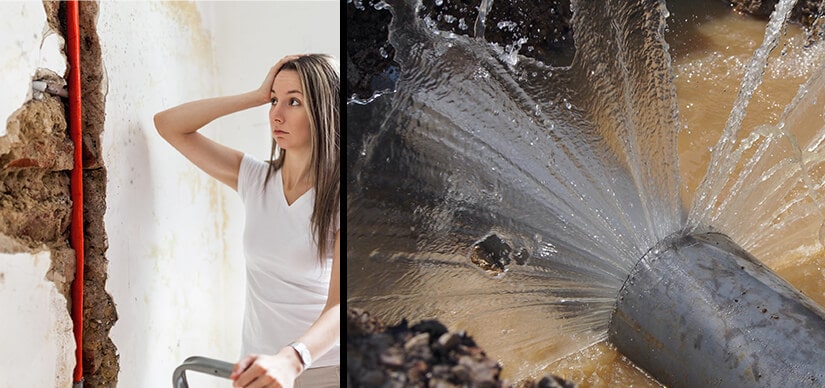Small but troublesome creatures, bed bugs can be a real nuisance when they take over your home. Hence, the seasons and weather can greatly affect the severity of the infestation.
Thus, in this post, we will talk about the effect of seasonal changes on bed bug activity and reproduction and give you some helpful tips on how to adjust pest control efforts throughout the year.
Influence of Seasonal Weather Changes on Bed Bug Activity and Reproduction Rates
Bed bugs are no different from many other insects in regard to weather, so their rate of activity and reproduction fluctuate depending on the season and weather. During the warmer months, bed bugs will be more active and reproduce at higher rates. That is because they love warm temperatures, which increase the speed at which their life cycle happens. As a result, the infestation is sure to grow during such a period.
In contrast, bed bug activity drops in low temperatures. They would not be able to increase their population as quickly nor move around more, but that does not mean they have gone dormant. Because of this, during the cold season, bed bugs will readily cause problems, particularly indoors where the temperature is comparably stable.
Warm Temperatures and the Development of Bed Bugs
The higher the temperature, the higher the bed bug activity. Warm weather can do so much to raise their development. For example, at temperatures between 21°C to 32°C, it only takes a few weeks for bed bugs to complete a full life cycle. That is to say, they turn from eggs into adults in no time, which helps an infestation grow up quite rapidly.
Moreover, rising temperatures activate them to feed more frequently. Due to the need for blood meals to be able to grow and reproduce, they become more active in searching for hosts. With this rise in frequency of feeding, they are likely to make contact with humans, hence causing infestation. Basically, warm weather is ideal for bed bugs to thrive and multiply at a quick rate.
Cold Weather and Bed Bug Activity
Low temperatures slow down bed bugs’ biological activity, but such conditions do not bring their actions to a complete end. When the temperature drops, bed bugs really slow down. Their metabolism reduces, and thus, they don’t need to feed as frequently. This can decrease their movement and make them less perceivable. Bed bugs, however, are rather hardy and able to survive in colder environments by merely hiding in warmer places such as heated homes or buildings.
Despite the fact that they might reproduce at a slower rate in the cold, it doesn’t mean they can’t eventually infest your home. They will go into the type of hibernation in which their activity is very low but not dead. That means that just because you might not see them as often during winter doesn’t mean they aren’t somewhere else – they are just waiting for warmer conditions to start being active again.
Seasonal Trends of Bed Bug Infestation
Bed bug infestations can follow certain trends throughout the year, with some seasons being worse than others. These trends can be a guide to planning relevant and effective measures of pest control.
Infestations During Spring and Summer
During spring and summer, the temperatures are high and are the perfect times for bed bug infestations. The bed bugs are more active during this period as the temperature increases, and they rapidly start reproducing. People tend to travel more during these seasons and may bring bed bugs home on their luggage from hotels or other places that have been infested. Spring and summer are the warm, humid months – the perfect environment for bed bug growth and development. With this in mind, it is not out of the ordinary to witness a peak in terms of the infestations during these months.
Be more alert during this period. Inspect your living space frequently, especially if you have been travelling. Wash and dry clothes and bedding at high heat to kill bed bugs. In addition, using a protective mattress and pillowcases can help prevent an infestation.
Autumn and Winter Infestations
Although autumn and winter are cold seasons, bed bug infestation can still be a problem. It might not be as serious as during the warmer months, yet it is not very uncommon. Bed bugs usually move indoors in autumn and winter to keep themselves warm during these seasons, so they still find their way into homes and apartments, etc. The heating systems within the house, however, can provide the bed bugs with a warm environment in which to remain active and continue reproducing, although at a slightly slower pace.
Even though bed bug activity tapers off, there’s no room for complacency. In fact, regular inspection and maintenance might prevent them from ever really getting started in the first place. Sealing up cracks and crevices, keeping minimal clutter, and cleanliness may help keep bed bugs at bay during the cold months.
Seasonal Strategies for Adjusting Pest Control Efforts
Bed bug infestation calls for seasonal adjustments in terms of changes to pest control efforts. Depending on the time of year or their level of activity, different strategies might be needed.
Prevention Tips for Warmer Months
Be more alert during the warmer months, when activity will be at its peak. Monitor your home for telltale bed bug signs: crimson-coloured blood spots on bedding, dark spots of faeces on mattresses, or the bugs themselves. Vacuum frequently, especially along cracks and crevices where bed bugs could be hiding. Consider placing bed bug interceptors on the legs of your bed to trap any bugs trying to climb up.
Also, while travelling, do not forget to check the hotel rooms for bed bugs. Moreover, do not keep your luggage either on the bed or on the floor. Instead, keep it on a luggage holding stand. Back home, after returning from the journey, washed and dried your clothing on high heat. This should kill any bed bug that may have hitchhiked a ride in your luggage.
Winter Season Prevention Tips
Do not neglect regular inspections and maintenance even in cold weather. Although bed bugs are slightly less active in cold weather, they still pose a threat. Seal all cracks and crevices to limit their hiding places. Keep your home free from clutter – no clutter should be present in any part of your home since it gives bed bugs more places to hide and makes them really hard to eliminate. It’s also a good idea to monitor for other seasonal pests like clothes moths, which can cause damage during the colder months when homes are heated. Setting up non-toxic moth traps can help detect an infestation early and protect your fabrics.
Mattress and pillow covers may be of help throughout the year, too. These can trap any pre-existing bed bugs and prevent new ones from penetrating your bed. Keeping a clean house on a regular basis and keeping an eye out for any signs of the bed bugs, will help keep them out during winter.
Conclusion
Weather changes during seasons create a significant disturbance to the infestation of bed bugs. Warmer temperatures generally raise bed bug activities and reproductive rates, hence increasing the risks of getting infested. Colder temperatures slow them down, but they never become zero risks indoors.
Knowing such seasonal trends and adjusting your pest control efforts accordingly is the way to go for better management and prevention against bed bug infestations. Be vigilant, make regular inspections, and alter your approach according to the seasons to protect your home from these relentless pests.











